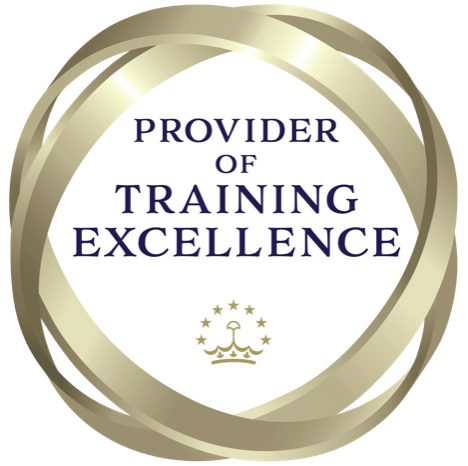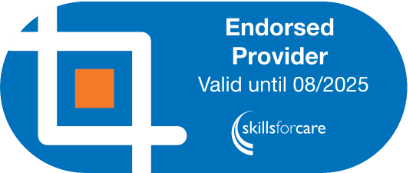


This course is designed for Forest Schools to teach basic first aid skills over two days meeting the guidelines of Forest Schools.
This qualification is available as a ProTrainings qualification and you can also request an Endorsed certificate from TQUK if required for an extra charge. The course is the same for both certificates.
The content of this and all our courses has been independently certified as conforming to universally accepted Continuous Professional Development (CPD) guidelines and come with a Certified CPD Statement as well as a ProTrainings Certificate and for online courses an Evidence Based Learning statement.
- Forest Schools
This course comes with 18.0 hours of CPD, although the time to complete the course online may be less than this.
The content of this and all our courses has been independently certified as conforming to universally accepted Continuous Professional Development (CPD) guidelines and come with a Certified CPD Statement as well as a ProTrainings Certificate and for online courses an Evidence Based Learning statement.
Units of assessment Unit one title Emergency First aid in a forest school setting
1 Understand the role and responsibilities of the forest school first aider
- 1.1 Identify the role and responsibilities of a forest school first aider
- 1.2 Identify how to minimise the risk of infection to self and others
- 1.3 Identify the need for consent to provide first aid
2 Be able to manage an incident in an outdoor setting
- 2.1 Conduct a scene survey
- 2.2 Conduct a primary survey of a paediatric casualty
- 2.3 Conduct a primary survey of an adult casualty
- 2.4 Protect a casualty from environmental factors
- 2.5 Summon appropriate assistance when necessary
- 2.6 Identify how to administer first aid to a casualty at risk of hypothermia
3 Be able to provide first aid to a casualty who is unresponsive and breathing normally
- 3.1 Justify when to place a casualty into the recovery position
- 3.2 Place an infant in the recovery position
- 3.3 Place an adult or child in the recovery position
- 3.4 Continually monitor a casualty whilst they are in the recovery position
- 3.5 Administer first aid to a casualty who is experiencing a seizure
4 Be able to provide first aid to a casualty who is unresponsive and not breathing normally
- 4.1 Identify when to administer Cardio Pulmonary Resuscitation (CPR)
- 4.2 Demonstrate CPR on a paediatric casualty using a manikin
- 4.3 Demonstrate CPR on an adult casualty using a manikin
- 4.4 Demonstrate the use of an AED
- 4.5 Outline modifications of CPR in relation to: Drowning, Avalanche, Lightning strike and Remote from immediate help
5 Be able to provide first aid to a casualty that is choking
- 5.1 Identify when choking is Mild or Severe
- 5.2 Administer first aid for an infant that is choking
- 5.3 Demonstrate the treatment for an adult or child who is choking
6 Be able to provide first aid to a casualty with external bleeding
- 6.1 Identify how to administer first aid to a casualty with a minor wound
- 6.2 Identify how to administer first aid to a casualty with minor burns and scalds
- 6.3 Identify the severity of external bleeding
- 6.4 Demonstrate the control of external bleeding
7 Know how to provide first aid to a casualty who is in shock
- 7.1 Recognise a casualty who is suffering from shock
- 7.2 Identify how to administer first aid to a casualty who is suffering from shock
8 Know how to provide first aid to a casualty affected by immersion in water
- 8.1 Outline how to administer first aid to a casualty who has been immersed in water
Unit two Recognition and management of illness and injury in a forest school setting
1 Be able to conduct a secondary survey
- 1.1 Identify the information to be collected when gathering a casualty history
- 1.2 Demonstrate how to conduct a head to toe survey
2 Know how to provide first aid to a casualty with suspected injuries to bones, muscles and joints
- 2.1 Describe types of fractures
- 2.2 Recognise suspected: Fractures, dislocations, Sprains and strain
- 2.3 Identify how to Administer first aid for suspected, Fractures, dislocations, Sprains and strains
3 Know how to provide first aid to a casualty with suspected head, neck or back injuries
- 3.1 Recognise a suspected major injury
- 3.2 Identify how to administer first aid for a suspected major Injury.
- 3.3 Demonstrate how to perform a log roll
4 Understand how to administer first aid to a casualty with conditions affecting the eyes, ears and nose
- 4.1 Outline how to administer first aid for an infant or child with a foreign body in the: Eye, Ear, Nose
- 4.2 Outline how to administer first aid for an infant or child with an eye injury
5 Know how to administer first aid to a casualty with a suspected major illness
- 5.1 Recognise suspected: Allergic reaction, Asthma attack, Diabetic emergency, Febrile convulsion, Heart attack, Stroke and Meningitis
- 5.2 Identify how to administer first aid to a casualty suffering from suspected: Allergic reaction, Asthma attack, Diabetic emergency, Febrile convulsion, Heart attack, Stroke and Meningitis
6 Know how to provide first aid to a casualty who is experiencing the effects of heat or cold
- 6.1 Outline how to recognise a casualty who has been affected by heat and cold
- 6.2 Outline how to manage a casualty who has been affected by heat and cold
7 Understand how to administer first aid to a casualty who has sustained an electric shock
- 7.1 Outline how to safely manage an incident involving electricity
- 7.2 Identify how to administer first aid for electric shock incidents
8 Know how to provide first aid to a casualty with burns and scalds
- 8.1 Recognise the factors that affect the severity of burns and scalds
- 8.2 Administer first aid for burns and scalds
9 Understand how to administer first aid to an infant and a child who have been poisoned
- 9.1 Identify the routes that poisons can take to enter the body
- 9.2 Identify how to administer first aid for sudden poisoning
10 Know how to provide first aid to a casualty suffering from an anaphylactic reaction
- 10.1 Identify common triggers for anaphylaxis
- 10.2 Recognise suspected anaphylaxis
- 10.3 Identify how to administer first aid for an anaphylactic reaction
- Student Manual (V8.7) - First Aid Plus
- Adult CPR Flowchart
- Adult CPR Flowchart handout/poster
- Asthma UK weblink
- Catastrophic bleeding and trauma First Aid Guidance From ProTrainings.
- Child CPR Flowchart
- Child CPR Flowchart handout/poster
- Childcare Accident Book
- Clean hand techniques leaflet
- Coronavirus (COVID-19) - link to the NHS website
- EpiPen Guide
- Find out what other courses are available as video online, blended and classroom courses nationally - our course finder
- Free student first aid program leaflet
- Government Advice - Best Practice Hand Rub
- Government Advice - Best Practice Hand Wash
- HSE First Aid at Work Regulations
- HeartSine 350 Information Leaflet
- Home Emergency Contact Sheet
- How to register to call EMS by text
- Infant CPR Flowchart
- Infant CPR Flowchart handout/poster
- Jext Product Data Sheets
- Jext patient Information Sheet
- Link to our Concussion ad Brain injury course in association with Headway, a head injury charity
- Link to the HSE website
- Meningitis Now website with many leaflets and resources link
- ProTrainings - Using an AED Leaflet
- ProTrainings Defibrillator eGuide
- Sign up for free Student First Aid - use code SCH-376-61-571
- Student Manual (V7.0) - First Aid - Arabic
- Student Manual (V7.0) - First Aid - Spanish
- Student Manual (V8.3) - Pierwsza Pomoc w Pracy Ksiazka studenta - Polish
- Student Manual (V8.6) - Anatomy and Physiology Human Body
- Student Manual V8.6 - First Aid - Dutch
- Student Manual V8.6 - First Aid - Portuguese
- Student manual V8.6 - First Aid - French
- Student manual V8.6 - First Aid - Ukrainian
- Student manual V8.6 - First Aid Manual Italian
- Visit the First Aid Show free for first aid and medical videos
- Workplace Emergency Contact Sheet
- Woundclot - haemostatic gauze for all types of bleeding
- Woundclot leaflet with price list - 2025
What is CPD and why is having Certified CPD important?
CPD stands for Continuous Professional Development and is required in many business sectors. Even if you do not require a set CPD credit level, having Certifed CPD ensures the quality of training. ProTrainings are the highest gold standard of CPD ensuring that all courses are externally verified and mapped to the highest levels.
What is "SCORM ready" and will courses run on a LMS?
SCORM Ready means that online courses can run on any compatible Learning Management System (LMS). SCORM courses run seamlessly on your existing LMS system without a separate login so staff only login using the existing company system. ProTrainings online courses have an advanced SCORM ready system to give more features than any other company.
Do I receive a certificate after completing your online training?
Yes, when you complete the online course you will be able to download and print a compliant completion certificate, evidenced-based learning statement to confirm course content and a certified CPD statement. There is no extra charge for the certificate. You can also buy a printed certificate to be posted to you for a small extra fee.
What training courses do you offer and how are they delivered?
We offer a full range of training courses across all business sectors as video online, blended and nationwide at your business or our local training centres. With over 350 courses you can learn at a time and place that meets your busy schedules and save money on travel and costs away from the office.
Are your courses Endorsed?
Yes, all ProTrainings courses are Endorsed by TQUK in addition to other approvals and endorsements to give you a quality compliant qualification for your courses whatever delivery method you take.
Why do I need accredited training courses?
Whether you are employed, running a business or taking training for other reasons, you need to ensure the course is trustworthy and will pass due diligence checks. Taking courses that are accredited gives you peace of mind of the quality, compliance and that your certificate will be accepted. Choosing ISO companies to ensure they are externally verified.
Are courses all online or can I take a blended or class course locally?
Most of our courses are available as online or classroom-based at a training centre locally. We can also send an instructor to your business to save travel and tailor the course to your business. To save time and money you can take most courses in a blended format with online and class training.



